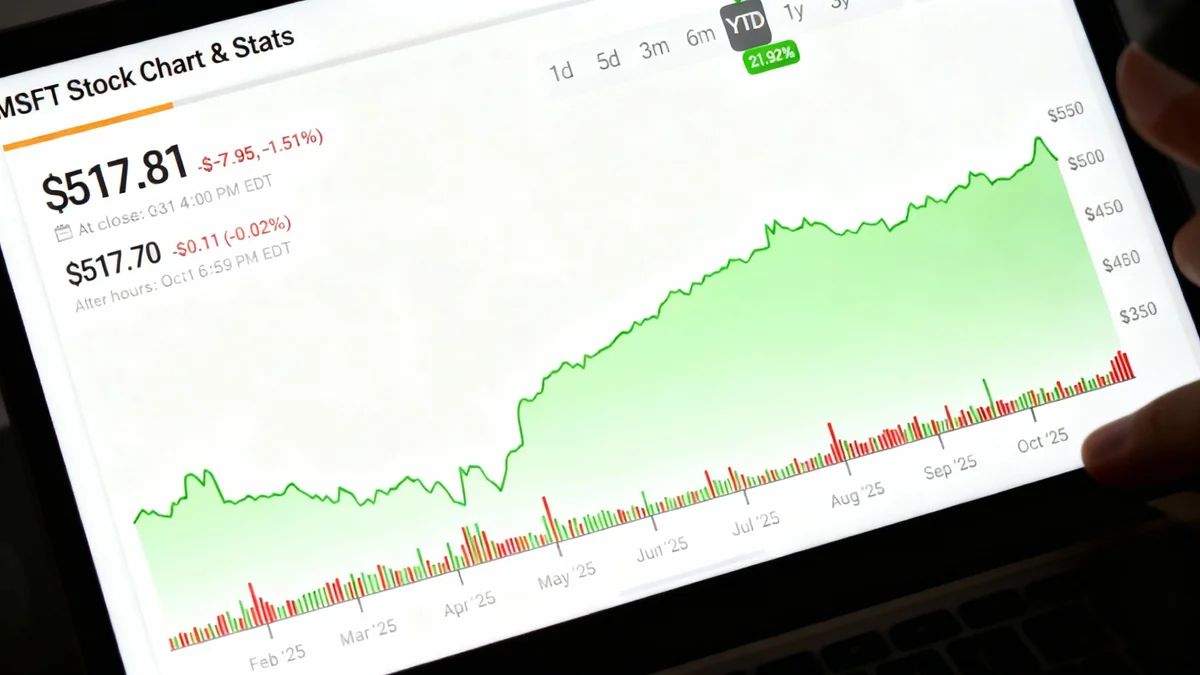Microsoft plans to increase its workforce following a year marked by job cuts and stagnant hiring, according to Chief Executive Officer Satya Nadella. The technology giant will resume adding jobs once its current employees complete a transitional period of adapting their work processes to incorporate new artificial intelligence tools.
Key Takeaways
- Microsoft plans to restart hiring after a period of workforce stabilization and AI adoption.
- The company's workforce stood at approximately 228,000 at the end of its 2025 fiscal year, despite significant job cuts.
- CEO Satya Nadella stated the focus is on employees "relearning" their roles with tools like Microsoft 365 Copilot.
- The strategy aims to increase productivity by blending human skills with AI automation before expanding headcount.
A Strategic Pause for an AI Reboot
After a year of workforce adjustments, Microsoft is preparing for a new phase of growth. The company, which ended its fiscal year in June with around 228,000 employees, is shifting its focus from consolidation to expansion. This move comes after a period that saw more than 6,000 employees laid off and another 9,000 depart the company in July.
Speaking on a recent podcast, CEO Satya Nadella outlined the company's vision for the future. He explained that the pause in hiring was a deliberate strategy to allow the organization to integrate artificial intelligence into its core operations. Nadella emphasized that the next year will be dedicated to helping staff adopt these new technologies and fundamentally reshape how they approach their daily responsibilities.
The "Unlearning" and "Relearning" Process
Nadella described the current phase as a period of “unlearning” old habits and “relearning” new workflows centered around AI. He compared this transformation to the revolutionary changes brought by the introduction of email and spreadsheets like Excel into the corporate world decades ago.
The goal is to ensure that future growth is built on a foundation of enhanced productivity. According to Nadella, employees are increasingly using tools like Microsoft 365 Copilot and GitHub Copilot, which are powered by models from OpenAI and Anthropic, to streamline tasks ranging from research and writing to complex project planning.
Balancing Human Talent and Machine Efficiency
Microsoft's approach to future hiring will be fundamentally different. Nadella stated that new hires will bring “more leverage” than before, signifying a strategic move to add personnel primarily in roles where human ingenuity cannot be replaced by AI-driven automation.
The core objective is to ensure that the company's output grows at a faster rate than its operational costs. This will be achieved by creating a symbiotic relationship between human employees and their AI counterparts, where AI handles routine work, freeing up human staff to focus on higher-value strategic initiatives.
"Planning and collaboration now start with AI... workers will learn how to use it to research, write, and share ideas."
As an example of this principle in action, Nadella mentioned a Microsoft executive who successfully utilized AI agents to manage the company's vast fiber network. This innovation reportedly reduced the need for additional human hires, demonstrating the potential for AI to optimize resource allocation and boost efficiency.
Workforce by the Numbers
- Total Employees: ~228,000 at the end of fiscal year 2025.
- Recent Cuts: Over 6,000 employees were cut during the fiscal year.
- Additional Departures: 9,000 employees left the company in July.
Financial Strength and Market Position
Microsoft's strategic pivot is supported by a robust financial position. The company recently reported a 12% year-over-year revenue growth and its widest operating margin since 2002. These strong financial results provide the necessary capital to invest in both top-tier talent and the continued expansion of its AI infrastructure through cloud services like Azure.
Despite the positive long-term outlook, the company's stock experienced a minor dip. On Friday, Microsoft (MSFT) shares declined by 1.51%, closing at $517.81. However, Wall Street analysts maintain a positive outlook.
Analyst Confidence Remains High
The consensus among market analysts for Microsoft stock remains a 'Strong Buy'. The average price target is set at $632.78, which suggests a potential upside of 22.20% from its current price. This confidence reflects a belief in Microsoft's long-term strategy of embedding AI across its product ecosystem and internal operations.
This strategy contrasts with some of its competitors. For instance, Amazon recently announced it was cutting 14,000 corporate positions as part of a broader restructuring effort, even as it continues to invest heavily in its own AI initiatives. The different approaches highlight a broader industry-wide effort to determine the optimal balance between human capital and artificial intelligence in the modern corporate landscape.
As Microsoft moves from a period of recovery to one of renewal, the message from its leadership is clear: the future of work at the company will have AI built into nearly every role, setting the stage for a new era of growth and innovation.





